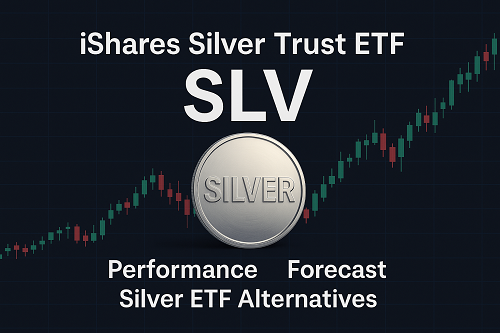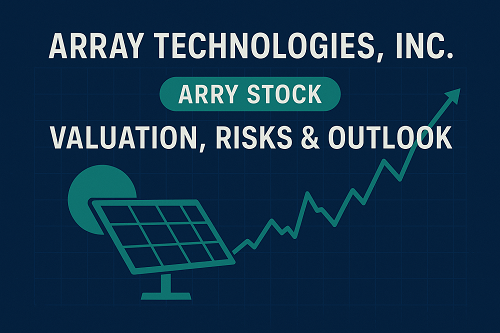The iShares Silver Trust (NYSEARCA: SLV) remains one of the most heavily traded and widely recognized exchange-traded funds providing direct exposure to silver. As 2025 unfolds, the fund has attracted renewed investor attention amid a surge in silver prices, persistent inflationary pressures, and rising industrial demand from clean-energy and technology sectors.
In this in-depth analysis, we evaluate SLV’s structure, performance, and macro context—and compare it to key competitors such as Sprott Physical Silver Trust (PSLV) and Aberdeen Standard Physical Silver Shares ETF (SIVR). This article delivers a comprehensive 2025 perspective on how SLV fits into a diversified portfolio and what its outlook suggests for investors seeking precious-metal exposure.
1Silver’s 2025 Market Context
Macroeconomic Drivers
Silver’s appeal in 2025 stems from a combination of monetary, industrial, and geopolitical dynamics.
After years of monetary tightening, global central banks—particularly the U.S. Federal Reserve—are signaling a potential shift toward rate cuts in the second half of the year. As real yields decline and the U.S. dollar weakens, non-yielding metals such as gold and silver have gained substantial traction.
Furthermore, geopolitical uncertainties—from Middle Eastern tensions to supply disruptions in Latin America—have heightened demand for safe-haven assets, particularly those with industrial utility like silver.
Industrial Demand Surge
The green-energy transition has transformed silver from a mere monetary metal into a crucial industrial input.
According to the Silver Institute, over 30% of global silver demand now stems from photovoltaic (solar) applications. In 2025, demand for silver in solar panel production is projected to exceed 200 million ounces, marking an all-time high. Additional demand is expected from electric vehicles, semiconductors, and medical technology sectors.
Meanwhile, mining supply remains constrained—many major producers face declining ore grades and rising extraction costs. HSBC forecasts a global silver deficit of roughly 200 million ounces in 2025, up from ~167 million ounces in 2024.
Inflation Hedge and Portfolio Role
Silver’s dual identity—industrial metal and store of value—positions it as both a cyclical and defensive asset.
As inflation remains above target in several developed economies, silver’s hedge appeal has resurfaced. Institutional investors increasingly treat silver as a portfolio diversifier correlated weakly to equities and bonds, often alongside gold for inflation protection.
Overview of the iShares Silver Trust (SLV)
Structure and Objective
Launched in 2006 by iShares (a BlackRock brand), the iShares Silver Trust (SLV) is designed to track the spot price of silver by holding physical bullion in vaults located primarily in London. Each share represents fractional ownership in the trust’s silver holdings.
- Ticker: SLV
- Issuer: BlackRock/iShares
- Benchmark: London Bullion Market Association (LBMA) Silver Price
- Expense Ratio: 0.50%
- Assets Under Management (AUM): Approx. $12.5 billion (as of Q4 2025)
- Average Daily Volume: Over 15 million shares
Advantages
- Direct exposure to silver’s spot price without leverage.
- High liquidity—the most actively traded silver ETF globally.
- Regulatory oversight and trusted custodianship by JPMorgan Chase Bank N.A.
- Ease of access for institutional and retail portfolios.
Limitations
- Expense drag of 0.50% annually can erode long-term returns.
- No yield—unlike mining stocks, SLV doesn’t distribute dividends.
- Trust structure (not an Investment Company Act fund) may pose unique tax and legal considerations for some investors.
SLV 2025 Performance Overview
Year-to-Date and Historical Returns
SLV’s 2025 performance has been outstanding. As of November 2025:
- Year-to-Date Return: +66.8%
- 1-Year Return: +50.9%
- 5-Year Return: +95.2% (~14.3% annualized)
(Source: FinanceCharts, Invezz, Zacks)
These gains have pushed SLV near its 14-year high, reflecting both the global silver rally and robust ETF inflows.
Correlation Analysis
SLV typically shows:
- Strong correlation with silver spot prices (~0.99)
- Negative correlation with the U.S. dollar index (DXY)
- Low correlation with equities (~0.15)
This makes SLV a non-correlated asset, valuable for portfolio diversification and macro hedging strategies.
Key Performance Drivers
- Weaker U.S. dollar and declining Treasury yields
- Increased industrial demand for solar and EVs
- Safe-haven buying amid global instability
- ETF inflows from both retail and institutional channels
Silver ETF Market: SLV vs Competitors
Sprott Physical Silver Trust (PSLV)
The PSLV, managed by Sprott Asset Management, offers a similar investment objective—physical silver exposure—but differs structurally as a closed-end trust.
Comparison Highlights:
| Feature | SLV | PSLV |
|---|---|---|
| Structure | ETF | Closed-End Trust |
| Expense Ratio | 0.50% | 0.62% |
| Redeemable for Physical Silver | No | Yes (for large holders) |
| Premium/Discount to NAV | Minimal | Often trades at a small premium |
| Liquidity | Very High | Moderate |
| Custodian | JPMorgan Chase | Royal Canadian Mint |
Takeaway: PSLV may appeal to investors who prioritize physical redemption and metal purity, while SLV remains more liquid and accessible for active traders and institutions.
Aberdeen Standard Physical Silver Shares ETF (SIVR)
SIVR provides nearly identical exposure to SLV but charges a lower expense ratio (0.30%). Despite that cost advantage, SIVR trades with lower volume and narrower institutional adoption.
For high-frequency or institutional users, SLV’s liquidity premium often outweighs SIVR’s lower fees—especially for tactical trades or large block executions.
Mining ETFs as Indirect Exposure
Investors may also consider silver-mining ETFs such as the Global X Silver Miners ETF (SIL) or ETF MG Prime Jr Silver Miners (SILJ).
These track equities rather than bullion, introducing operational leverage—mining stocks can outperform or underperform physical silver based on margins, costs, and exploration success.
However, mining ETFs also carry higher volatility and company-specific risk, making SLV preferable for pure price tracking.
Technical and Fundamental Analysis (2025)
Technical Picture
From a technical standpoint, SLV has established a strong uptrend since late 2024, with:
- Support: $26.50 – $27.00
- Resistance: $33.00 – $35.00
- 50-day MA above 200-day MA, signaling bullish momentum.
Volume patterns suggest consistent institutional accumulation, while RSI readings near 70 indicate short-term overbought conditions but long-term strength.
Fundamental Catalysts
- Energy transition: Solar PV and EV demand expansion.
- Monetary policy: Anticipated U.S. rate cuts in Q3 2025.
- Geopolitical risk: Sustained haven flows.
- Supply deficits: Ongoing mine underinvestment.
Key Risks
- U.S. dollar rebound or unexpected Fed hawkishness could trigger corrections.
- Global slowdown may suppress industrial silver consumption.
- ETF outflows if investor sentiment shifts toward equities or crypto assets.
Portfolio Strategy: Where SLV Fits
Diversification Benefits
Given its low correlation with traditional asset classes, SLV can enhance risk-adjusted portfolio performance. Modern Portfolio Theory suggests even a 5–10% allocation to silver or gold ETFs can reduce volatility without significantly sacrificing returns.
Tactical Considerations
Traders may utilize SLV as:
- A short-term macro hedge during inflationary or risk-off phases;
- A speculative vehicle for silver-price momentum;
- A pairs trade component (e.g., long silver vs short gold or vice versa).
Strategic Allocation
Long-term investors seeking hard-asset exposure may combine SLV with gold ETFs (e.g., GLD or IAU) for balanced precious-metal diversification. Institutional allocators often use SLV as a liquid proxy to complement commodities baskets or inflation-hedging portfolios.
Outlook and Forecast (2025–2026)
Analyst Consensus
- HSBC Forecast: Average silver price ≈ $35.14/oz in 2025, citing safe-haven flows and gold correlation.
- BMO Capital Markets: Targets $33 silver in 2025, with potential upside to $38 if Fed policy eases sooner.
- Bloomberg Consensus: Silver may outperform gold short-term due to industrial underpinnings.
Scenario Analysis
| Scenario | Silver Price Range | SLV Target | Key Drivers |
|---|---|---|---|
| Bull Case | $38–$42 | $40+ | Dollar weakness, aggressive rate cuts, strong solar demand |
| Base Case | $33–$36 | $32–$35 | Gradual Fed easing, stable industrial demand |
| Bear Case | $27–$30 | $27–$29 | Strong dollar, delayed rate cuts, global slowdown |
Long-Term Outlook
Looking beyond 2025, silver’s structural demand appears sustainable. The global decarbonization agenda and infrastructure investments will likely sustain industrial consumption. Coupled with tight supply and potential monetary easing, the long-term outlook for SLV remains constructive—albeit volatile.
Conclusion and Key Takeaways
The iShares Silver Trust (SLV) has reaffirmed its position as the premier vehicle for silver exposure in 2025. Strong industrial demand, macro tailwinds, and persistent supply deficits have propelled both silver prices and ETF inflows.
For investors, SLV offers liquid, transparent, and direct access to silver without the complications of physical storage or mining-equity risk. While competitors like PSLV and SIVR provide credible alternatives, SLV’s unmatched liquidity, tracking precision, and institutional adoption keep it the benchmark silver ETF globally.
However, volatility is inherent—silver’s price can swing sharply with macroeconomic sentiment. A disciplined allocation (5–10%) within a diversified portfolio can help investors benefit from silver’s upside while managing its cyclical risks.
Bottom Line:
SLV remains a strategically relevant asset for 2025—bridging the worlds of industrial growth and monetary defense. Its risk-reward profile, while dynamic, offers compelling diversification value in an evolving macro landscape.
Frequently Asked Questions
Q1: What does SLV invest in?
SLV holds physical silver bullion stored in London vaults, aiming to track the spot price of silver before fees.
Q2: Is SLV a good hedge against inflation?
Yes. Silver historically performs well during periods of inflation and currency debasement, though with more volatility than gold.
Q3: What are the main risks of SLV?
Price volatility, dollar strength, interest-rate policy, and liquidity-driven sell-offs.
Q4: How does SLV compare to PSLV or SIVR?
SLV is more liquid, PSLV allows physical redemption, and SIVR offers slightly lower fees but thinner trading volume.
Q5: Is silver expected to rise in 2026?
Most analysts project continued strength driven by industrial demand and easing monetary conditions, though corrections are possible.





 XAUT-USD
XAUT-USD  AMD
AMD  MARA
MARA  SHOP
SHOP  BULL
BULL  CL=F
CL=F